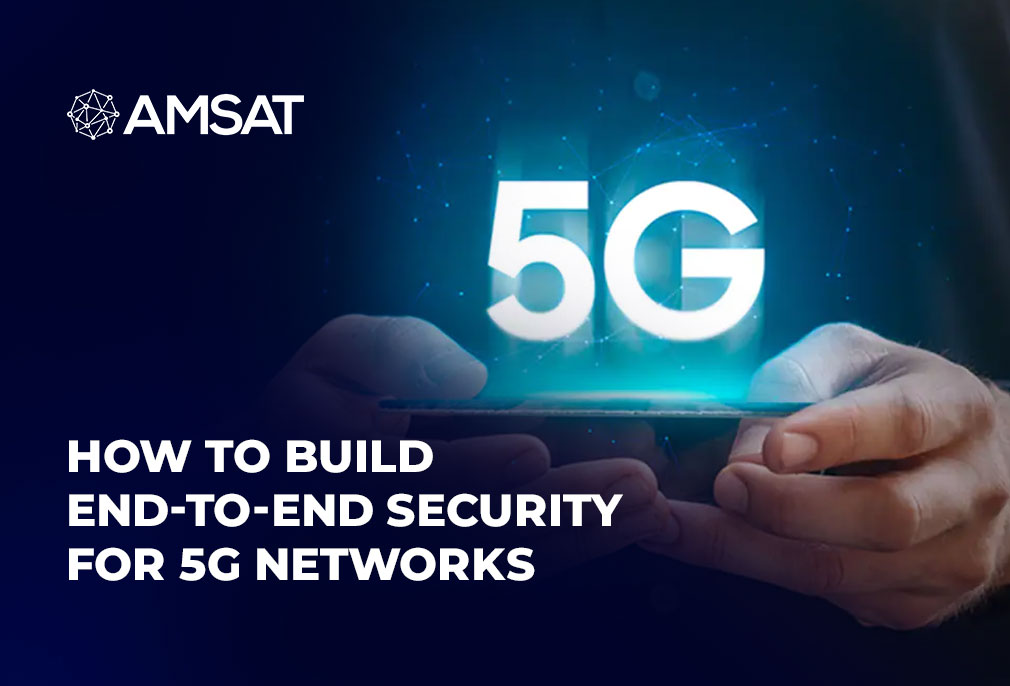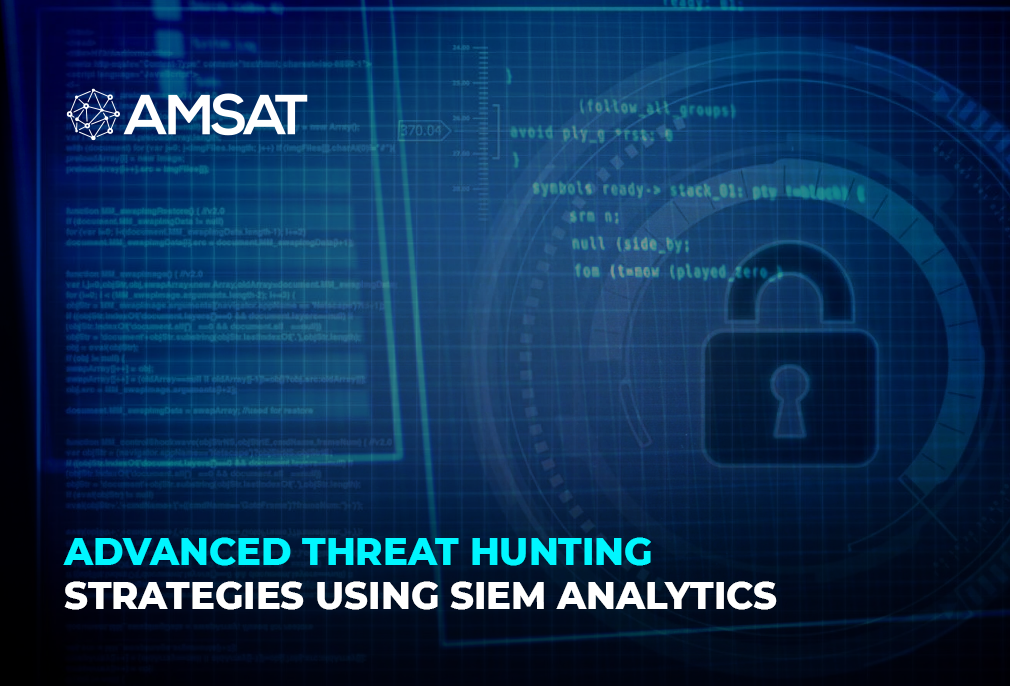Latest Blogs

By AMSAT july 05,2021
How to Build End-to-End Security for 5G Networks
The advent of 5G presents unmatched opportunities for organizations, particularly those competing in today’s constantly growing and highly competitive digital ecosystem.
5G brings a phenomenal surge in mobile broadband and high-reliability as well as ultra-low latency (URLLC). The ensuing growth of new, highly responsive applications, rich media streaming, and more will entirely transform networks. And that’s just the beginning. The expansion and distribution of cutting-edge high band millimeter-wave (mmWave) 5G will hasten the development of smart infrastructures, boost the automation of manufacturing settings, and provide the ultra-high density required to control new computing environments.
Nevertheless, as organizations embrace 5G networks and services to enable digital innovation across new network limits, they are also presenting new risks. And part of the 5G challenge is that there are few security solutions on the market intended to keep up with 5G-boosted networks. We already see some environments—not just super-high performance data centers, but new edge compute milieus and even remote workers on 5G-enabled devices—being badly protected. For example, millions of remote workers are now being secured with little more than a VPN connection. Without a security plan in place, these enterprises will be unable to secure themselves against the next generation of malware designed to harness the speed and magnitude of 5G and take advantage of the patchy and thinly deployed security systems currently in place.
5G Security Challenges
There’s no doubt that everybody wants to ensure that security controls don’t overshadow the reason they are embracing 5G in the first place. Security systems not intended for 5G settings can slow applications, introduce dormancy issues, and affect the user experience of workers and customers. Luckily, 5G includes several integral security capabilities that can help. But we must be wary not to over rely on them. No enterprise moving critical data, applications, and workflows across their network or relying on business applications to link to important resources should ever consider 5G as their only source of protection against cyber threats or the deliberate misuse of infrastructure and services. An extra layer of security discernibility and control designed for the realities of a 5G network is essential.
But this is about much more than just purchasing a fast firewall. 5G is going pervasive, meaning we will see it organized everywhere across the circulated network—in LANs, WANs like SD-WAN, data centers, cloud platforms, and cloud-based services as well as endpoints and IoT devices. It will not just pervade IT but will play an important role in OT as well. From a security viewpoint, each of these settings already has its challenges. Endpoint security has grown from old-style antivirus software to providing complete protection from sophisticated malware and evolving zero-day threats.
End-to-end Security and High Performance
Dealing with this challenge begins by converging networking and security into an integrated solution—a process known as security-centric networking—to produce a security plan that is not just highly flexible and adaptive but that can be widely deployed. By intertwining security into the core of the network, security systems will not only be able to develop and adjust to digital innovation efforts but do so at 5G speeds. This enables an end-to-end method that can deliver vital security while keeping low dormancy and high performance. But attaining this requires a platform method that can provide steady protection to any user on any device in any location.
The job of a security platform is to be deployable anywhere, in any form factor, while offering steady functionality across and between edges. And for 5G, virtual platform instances should not only be able to scale up and out to meet performance demands, but physical devices need to include improved processing power, so security never becomes a blockage.
The first benefit of an integrated platform method is that it enables single-pane-of-glass visibility, steady policy distribution and enforcement, centralized threat intelligence collection and association, and orchestrated response to recognized threats. It also lets security follow data, workflows, and transactions end-to-end, rather than handing off security as data moves from one area to the next, important in a world where enterprises run on applications.
But maybe the most critical value of a platform is that it enables true automation. 5G-enabled threats will far overtake the capacity of data analysts and systems engineers to spot and respond. Automated systems are integrally quicker than humans. And when improved with things like machine learning and AI, they can also spot, examine, and respond to threats right off the bat, shutting them down mid-attack, even at 5G speeds.
A Secure 5G Ecosystem
Though 5G is opening a world of opportunities for digital business, it’s only the tip of the iceberg at the moment. 6G is impending, and many of the ways this new functionality will affect organizations haven’t even been conceived yet. But all this will only be possible if security is a vital part of the solution. Enterprises need to start transitioning now to a global security platform that can scale as networks evolve and extend to the farthest reaches of the network. By merging security and networking functionality into a combined, expansive, and flexible platform, organizations can prepare now to support the next generations of high-performance, hyperconnected systems and devices their users will demand and on which their future relies.
TAGS
- Endpoint Security
- Endpoint Protection
Recent Blogs
Ready to Get Started?
Our specialists are ready to tailor our security service solutions to fit the needs of your organization.
Latest Blogs

By AMSAT Aug 28,2020
Dealing with cyber-threat: a complex challenge
Across the globe, organizations in various sectors, both public and private, now openly recognize that cyber-attacks are one of the most widespread and gravest risks they encounter.
Given the risks organizations around the world face with regard to the security of their data, dealing with cyber-threat has become a complex challenge. Much of the existing focus is on security and compliance, as companies – subject to growing amounts of legislative, corporate and regulatory requirements – prove they are handling and securing information appropriately.
Since the information security landscape is constantly evolving, private and public sector organizations find it hard to believe they could be a target for cyber-attacks. This approach needs to change, as it’s best to be proactive rather than reactive. At the same time, relying on defense is no longer viable, as the threat actor bent on wreaking harm to an organization will be unrelenting in their objective. This results in public and private sector organizations getting to know what is going on around them so that they can recognize when an attack has occurred or when an attack is on the cards. Intelligence and the intuition that it brings is at the core of next generation of information security.
The importance of cybersecurity
Why should security figure at the top of every organization’s top priority list? Why should senior management of every small and large organization be concerned about cybersecurity?
The answer: The digital world in which business is conducted is susceptible and prone to being attacked. Digitization brings with it boundless opportunities for innovation. It still has a long way to go before becoming a fully protected system that is set to control and regulate itself. Decision-makers ought to ensure that all systems in their company abide by the latest high-security protocols. Employees, particularly not so tech-savvy, must also be competent in basic cyber-security etiquettes. For example, everyone needs to know how to recognize a phishing email and how to isolate it, while informing the proper authority, both internal and external.
Without the right security strategy, you might be in for an irreparable damage for your organization. Even with the sturdiest controls in place, an organization would do well to bank on those controls to be tested. Threat attackers know how to find weak spots and take advantage of them, opening holes up that bring down robust systems. The solution lies in being offensive rather than defensive, and practicing the essential security tasks that will keep most of the threats at bay.
TAGS
- Cyber Crime
- Security Updates
Recent Blogs
Ready to Get Started?
Our specialists are ready to tailor our security service solutions to fit the needs of your organization.









